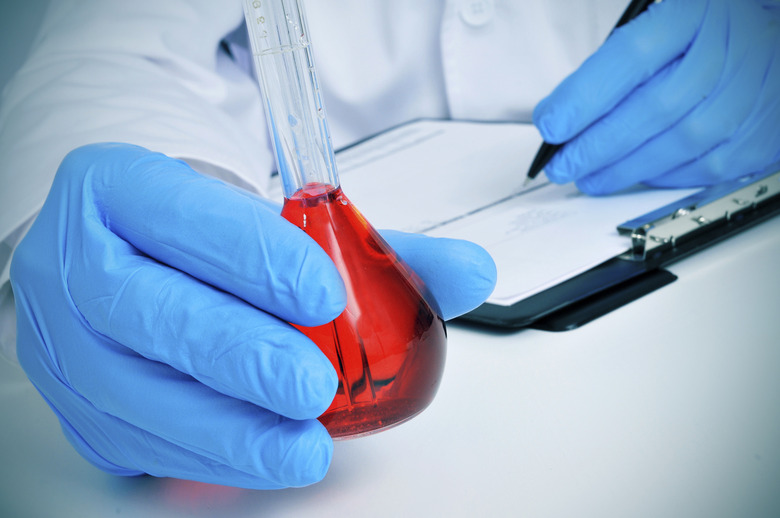How To Calculate Average Rate
Calculating an average rate shows the amount of change of one variable with respect to another. The other variable is commonly time and could describe the average change in distance (speed) or chemical concentrations (reaction rate). You can replace time with any correlated variable, however. For example, you might calculate the change in a local bird population with respect to the number of bird feeders you place. These variables could be plotted against one another, or you could use a function curve to extrapolate data from one variable.
Step 1
Measure the variables at two points. As an example, you might measure 50 grams of a reactant at time zero and 10 grams after 15 seconds. If you're looking at a graph, you could reference data at two plot points. If you have a function, such as y = x^2 + 4, plug in two values of "x" to extract the respective values of "y." In this example, x-values of 10 and 20 produce y-values of 104 and 404.
Step 2
Subtract the first value of each variable from the second. Continuing with the reactant example, subtract 50 from 10 to get the concentration change of -40 grams. Likewise, subtract zero from 15 to get a change in time of 15 seconds. In the function example, the changes in x and y are 10 and 300, respectively.
Step 3
Divide the primary variable's change by the influencing variable's change to get the average rate. In the reactant example, dividing -40 by 15 gets an average rate of change of -2.67 grams per second. But reaction rates are typically expressed as positive numbers, so drop the negative sign to get just 2.67 grams per second. In the function example, dividing 300 by 10 produces a "y" average rate of change of 30 between x-values of 10 and 20.
TL;DR (Too Long; Didn't Read)
A negative rate describes a decrease, whereas a positive figure describes an increase. Therefore, always keep the negative sign, unless you're calculating chemical reaction rates, which are expressed as positive figures.
The primary variable is the one that's changing with respect to the other variable. In the examples, the chemical concentration changed over time and y changed with respect to x.
Cite This Article
MLA
Taylor, C.. "How To Calculate Average Rate" sciencing.com, https://www.sciencing.com/calculate-average-rate-8176238/. 24 April 2017.
APA
Taylor, C.. (2017, April 24). How To Calculate Average Rate. sciencing.com. Retrieved from https://www.sciencing.com/calculate-average-rate-8176238/
Chicago
Taylor, C.. How To Calculate Average Rate last modified March 24, 2022. https://www.sciencing.com/calculate-average-rate-8176238/
